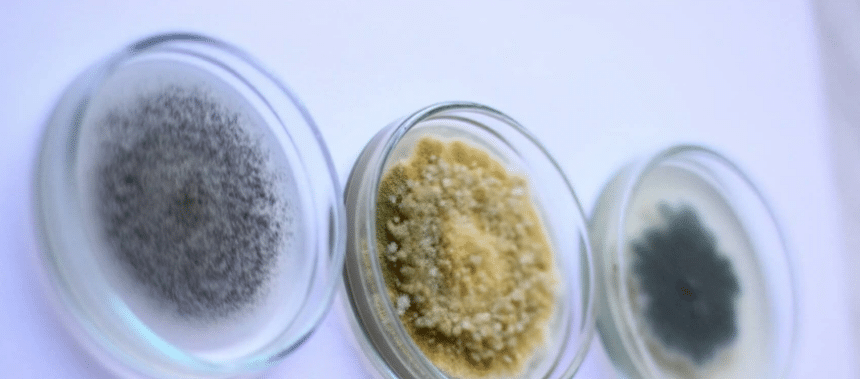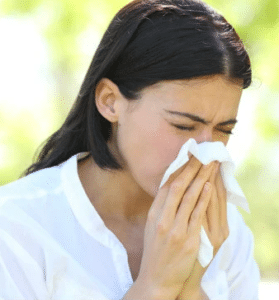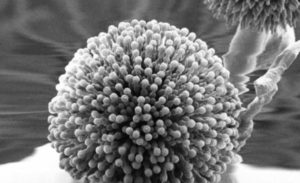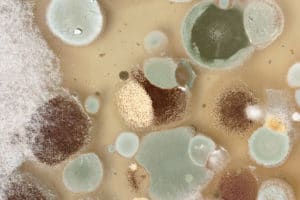
Wanting to learn about toxic vs non-toxic mold? You may be surprised at what we’re about to tell you about mold’s ability to make you sick.
Mold is known for causing a host of health issues, including everything from asthma-like symptoms to headaches to respiratory infections. You can find mold everywhere in our environment, so proactively working against its spread using cleaning and other prevention methods can stave the growth of microfungi in your home or place of work.
find mold everywhere in our environment, so proactively working against its spread using cleaning and other prevention methods can stave the growth of microfungi in your home or place of work.
Mold carries a reputation for causing serious bodily infections that bring on exhaustion, brain fog, respiratory distress and skin rashes.
While we don’t discount that some people have experienced health problems because of inhaling or touching mold, there is no evidence that mold actually releases toxins that cause health conditions beyond the standard respiratory inflammation and allergies, according to the Centers for Disease Control & Prevention (CDC).
The reality is, there is no such thing as “toxic mold.” There are some mold species that are “toxigenic,” meaning they produce “mycotoxins.” Mycotoxins are metabolites produced by molds that are capable of harming other living organisms
That being said, we’ll discuss toxic vs non toxic molds here so that you can know which types you should avoid. Different types of mold are literally everywhere, including in the air, and some people may be sensitive to different kinds of mold.
This article does not serve as official medical guidance; if you are having physical symptoms of allergies to mold, please see a physician as soon as possible. Also, be sure to call a mold remediation specialist if you suspect that mold is in a building you live or work in! Check out why it’s not safe to live or work in a building with mold.
Toxic Vs Non Toxic Mold – Varying Degrees of Symptoms
The 100,000+ different types of mold we know of today differ in the way they release mycotoxins (toxic substances that affect our bodies). You could consider all mold to be toxic to your health to some degree, even if in  minimal ways, because molds vary in toxicities. Three types of mold comprise the group of microfungi that elicit a physical reaction if you inhale or touch their spores.
minimal ways, because molds vary in toxicities. Three types of mold comprise the group of microfungi that elicit a physical reaction if you inhale or touch their spores.
- Allergenic molds
- Toxigenic molds
- Pathogenic molds
Learn about the different treatments for mold exposure here.
Allergenic Mold
Molds that cause your immune system to react and attempt to destroy fungal invaders are called allergenic molds. They include:
- Alternaria
- Aspergillus
- Aureobasidium
- Chaetomium
- Cladosporium
- Fusarium
- Mucor
- Penicillium
- Trichoderma
- Ulocladium
The CDC describes symptoms of allergic reaction to mold:
- Nasal congestion
- Wheezing or shortness of breath
- Red or itchy eyes
- Irritated skin
Mold allergies can vary in severity, and your reaction can depend on the humidity of the environment you’re in.
If you’re experiencing wheezing, coughing shortness of breath or chest  tightness, treat these symptoms with the same urgency you would an asthma attack and see a physician, the Mayo Clinic advises.
tightness, treat these symptoms with the same urgency you would an asthma attack and see a physician, the Mayo Clinic advises.
The Mayo Clinic’s list of risk factors for increased risk of having allergies to mold include:
- A family history of allergies
- Working in an occupation that exposes you to mold, like farming or logging.
- Spending time in an environment with a humidity point of 50-percent or more, poor ventilation or high moisture levels/ sources of moisture that haven’t been fixed by a mold remediation professional.
While mold typically doesn’t cause infections in people who have healthy immune systems, there are complications associated with mold allergies that exceed the typical hay-fever-like symptoms, according to the Mayo Clinic. These include:
- Mold-induced asthma
- Allergic fungal sinusitis
- Allergic bronchopulmonary aspergillosis (typically seen in asthma and cystic fibrosis patients)
- Hypersensitivity pneumonitis (rare lung inflammation)
Toxigenic Mold
Toxigenic mold emits toxins that negatively affect the human body. Legalinfo.com lists five types of “toxic” mold:
- Stachbotrys
- Cladosporium
- Fusarium
- Penicillium
- Aspergillus
Mold releases spores into the air, and when a person inhales them, a physical reaction can occur due to the toxic nature of the mold. For example, mold exposure can cause a sinus infection.
A Note about “Black Mold”
Please note: There is a toxigenic mold called Stachybotrys chartarum, which is thought by many to be more dangerous than any other type of mold and known as “black mold.”
While we don’t discount the experience that some people have had with a severe or life-threatening reaction to black mold, we feel obligated to communicate scientifically backed information that says there is no scientific evidence that black mold is more dangerous than any other type of mold (CDC).
Pathogenic Mold
Pathogenic molds can cause infection in people, especially those who are immunocompromised.
IQAir lists the following pathogenic molds:
- Aspergillus species – One of the most prevalent molds, this mold can cause pulmonary infections.
- Crytococcus neoformans – People with weak immune systems can develop cryptococcal meningitis because of this mold.
- Histoplasma capsulatum – This mold can cause a lung infection or histoplasmosis, an infection that can get severe but usually does not require treatment.
If you suspect you’re exposed to mold, the best way to avoid experiencing mold allergies or other symptoms of exposure is to get rid of the mold immediately. Have a mold remediation specialist visit ASAP to find out what kind of mold you may have growing in your home or workplace!
If you’re not sure whether you need a mold specialist to address the mold you’ve found, click here learn more here about ways to know when you can handle mold or need to call a professional mold remediator.

Trackbacks/Pingbacks